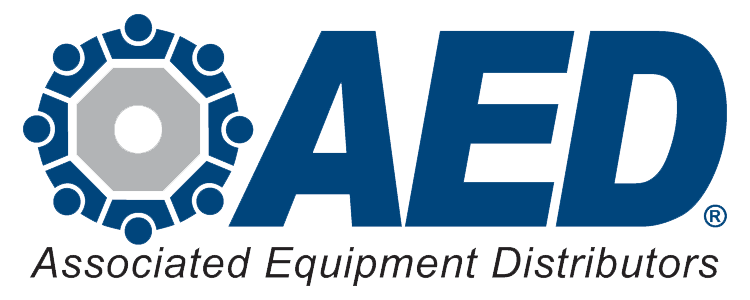In this episode of On the Record, brought to you by Associated Equipment Distributors, we look at Titan Machinery’s Q4 and FY 2025 earnings, and the improvement in inventory levels over the last 2 quarters. In the Technology Corner, Noah Newman shares precision data from the 2025 Strip-Till Benchmark Study, as well as some perspective from Pete Youngblut, who strip-tills and runs precision farming dealer Youngblut Ag in Dysart, Iowa. Also in this episode, no-tillers are moving to larger planters a look at how John Deere Financial stacks up compared to other mid-sized banks in Wisconsin and changes in loan demands in the Chicago and St. Louis Federal Reserve Districts.
On the Record is brought to you by Associated Equipment Distributors — the leading association in North America for the equipment distribution industry.
Explore the 2025 AED Annual Education Seminars lineup which includes seminars on Parts Management, Service Management, and Branch/Store Management.
Additionally, don't miss the upcoming conferences, such as the Finance/HR Symposium, Leadership Conference, Women in Equipment Conference, and Policy Conference.
Contact us for more information about how you can register for these events.
TRANSCRIPT
Jump to a section or scroll for the full episode...
- Titan Machinery Destocks Over $400 Million in Equipment Inventory
- Tracking Crop Prices
- Helping Your Customers Determine Which Technology is Right for Them
- No-Tillers Report Larger Planters vs. Previous Years
- John Deere Financial Second Largest ‘Mid-Sized’ Bank in Wisconsin
- Demand for Loans
- DataPoint: Payroll Expenses on the Rise
Titan Machinery Destocks Over $400 Million in Equipment Inventory
Titan Machinery reported that its fiscal year 2025 revenues were down 2% to $2.7 billion and for the fourth quarter revenues were down 10.8% to $759.9 million.
In its agriculture segment, Titan reported that revenue for the fourth quarter of fiscal 2025 was $534.7 million, compared to $620.6 million in the fourth quarter last year.
While revenues were down, the Case IH dealership group made considerable progress in destocking its equipment inventory. During the fourth quarter, Titan achieved $304 million of inventory reduction.
Following the earnings call on March 20, Baird analyst Mig Dobre said, “For a dealer, the key risk in a downturn rests with excess inventory (particularly used) and the potential writedowns and margin compression needed in order to clear machines off the lot – 4Q was a great example. Titan has made real progress in 4Q, destocking $300 million in equipment inventories (well ahead of the $100 million expected).”
He goes on to say that “Titan has now destocked $400 million of equipment over the past two quarters with inventories now just 13% above pre-Covid levels adjusting for store count and OEM pricing.”
Another positive, in the ag segment service achieved 8.2% same-store sales growth for the full year.
Looking ahead to fiscal year 2026, Titan expects stable parts and service business in its ag segment, despite industry decline for wholegoods. Ag segment revenues are forecast to be down 20-25% in fiscal year 2026 and the dealership group expects to see additional equipment inventory reduction, shifting its focus to optimization of product mix to ensure optimal inventory.
Tracking Crop Prices
As of March 24, corn prices were $4.64 down 6 cents from our last episode two weeks ago. Soybeans closed at $10.07, down 4 cents. And Wheat closed at $5.48, down 8 cents.
Helping Your Customers Determine Which Technology is Right for Them
Hot off the pressers, it’s Strip-Till Farmer’s 12th annual Strip-Till Operational Benchmark Study! And at first glance, strip-tillers continue to be heavy users of precision technology.

Notably, 89% who responded to the survey will use GPS tractor auto-steer in 2025, 74% will use yield monitor data analysis and 68% will use field mapping. 65% auto-boom/nozzle shutoffs and 63% variable rate fertility. Pete Youngblut’s a strip-tiller, and he also happens to be the owner of Youngblut Ag, a precision farming dealer in Dysart, Iowa. Pete, what do you tell your strip-till customers when they’re mulling over their purchase decisions?
“If we're not getting a return on it, is that what we really want? Some stuff is nice. I've got a truck. I made sure I had leather seats because I got a seven-year-old that makes a hell of a mess. I got my return out of leather seats. They're easy to hose down, right? But did I need the sunroof that came with it? That's kind of cool. Wife likes it, I guess. But, I don't see any return in that thing, right? So, that's what we want to look at. I'm going to get a lot of return out of a good metering system. I'm going to get a lot of return out of making sure I'm on the strip instead of off to the side. I might not get return out of having sensors that tell me whether it's blocked or not. I could, very well could, depending on what product I am. But where do I want to start and where do I want to stop? ”
Head to PrecisionFarmingDealer.com for more numbers from the Strip-Till Operational Benchmark Study.
No-Tillers Report Larger Planters vs. Previous Years
More no-tillers are air-seeding soybeans, planting corn with larger planters and adopting precision technology after investing in new equipment in 2024, according to the 2025 No-Till Farmer Benchmark Report.

In studying the planting trends for 2025, one change that stood out was the number of no-tillers planting with larger planters. No-tillers with 16-row corn planters are up 3.9 percentage points to 31.2%, and those with 24 rows grew 6.7 points to 18.2%. Meanwhile, those planting with 12-row planters fell from 28.4% to 23.7%.
This change might be due to last year looking to be the year of investing in farm equipment, as the percent of no-tillers intending to buy was up for almost every category in 2024.

As expected, this year those numbers are down, with the exception of those who will buy air seeders (9.2% this year vs. 5.8% in 2024) and roller crimpers (11.3% vs. 5.8%). This year drones were included as an equipment category, and 14% of respondents said they plan to buy one.
Those drops are reflected in their budget estimates. Last year, no-tillers anticipated spending an average of $47,000 on farm equipment purchases, but this year it’s roughly $18,000 less, at about $29,000. Interestingly, they estimate that they actually spent almost $64,000 on equipment in 2024 — $17,000 more than predicted — but still roughly $2,100 less than their estimated spend in 2023.
John Deere Financial Second Largest ‘Mid-Sized’ Bank in Wisconsin
According to the March 14 2025 Milwaukee Business Journal, John Deere Financial represents the second-largest “midsize” bank in Wisconsin, defined as banks with assets between $1 billion and $4 billion.

It has a high problem-loan ratio of 0.4% tied for highest of 21 banks studied. John Deere Financial also had the highest loan-to-deposit ratio of the banks studied at 99.15% and the lowest estimated percent of insured deposits at 0.01%.
According to the Business Journal report, John Deere Financial has $827.5 million in total equity, $3.4 billion in net loans and leases.
Demand for Loans
According to a report by Gerald Mashange and Bradley Zwilling with the Univ. of Illinois Department of Agriculture and Consumer Economics, in the fourth quarter of 2024, loan demand in the Chicago Federal Reserve District exceeded that of the St. Louis District as shown here.

Surveyed bankers evaluate loan demand by comparing current-quarter conditions to the same period last year, indicating whether they are higher, lower, or the same. With these responses, a diffusion index is calculated for each district by subtracting the percentage of bankers who responded “lower” from the percentage who responded “higher,” and then adding 100. When the diffusion index is greater than 100, then the demand for loans is increasing and vice versa.
Loan demand rose in 2023 and remained steady in the St. Louis District in 2024. In the Chicago District, loan demand rose by a larger amount from 2023 to the first quarter of 2024, and briefly experienced a decline from the first quarter to the second, before rebounding again in the second half of the year.

The reduction in working capital over the past 24 months is reflected by the rise in borrowing needs. According to data from the Illinois Farm Business Farm Management (FBFM) Association, the average amount of working capital for the 2,121 farms in the sample decreased by 17% in 2023, falling from $593,813 in the prior year to $494,571. In that year, grain farms reported the highest average working capital at $511,659, while dairy farms had the lowest at $167,755. Hog farms averaged $466,446 in working capital, and beef farms reported $244,726. Initial reviews of the 2024 FBFM data indicate that working capital decreased by 20 to 30%, while liabilities increased by 2 to 7%, and interest expense rose by 20 to 30%.
DataPoint: Payroll Expenses on the Rise
This week’s DataPoint is brought to you by the Dealership Minds Summit. To register and to view the just released program, visit DealershipMindsSummit.com.

According to the 2025 Dealer Business Outlook & Trends Report, the highest percentage of dealers — 45.6— expect their payroll expenses to go up 1-3% this year. Another 39.2% of dealers expect payroll expenses to be up 4-6%, Nearly 30% of dealers said they expect their payroll to be up 7% or more.
On the Record is now available as a podcast! We encourage you to subscribe in iTunes, the Google Play Store, Soundcloud, Stitcher Radio and TuneIn Radio. Or if you have another app you use for listening to podcasts, let us know and we’ll make an effort to get it listed there as well.
We’re interested in getting your feedback. Please feel free to send along any suggestions or story ideas. You can send comments to kschmidt@lessitermedia.com.








